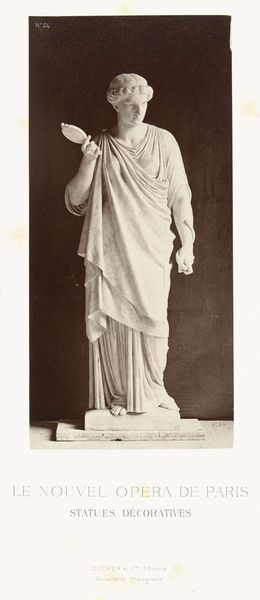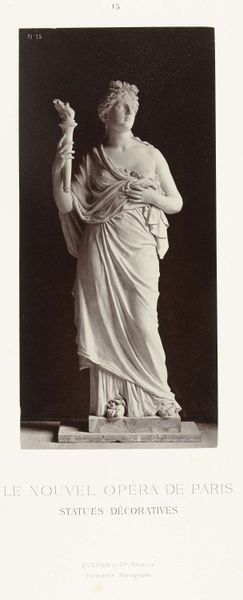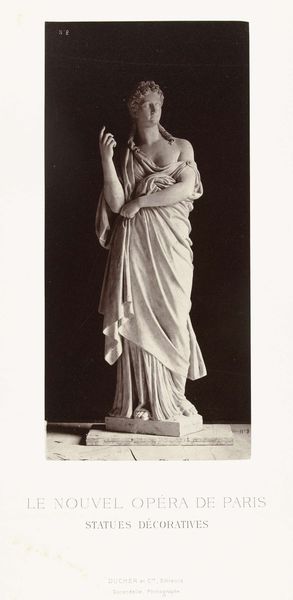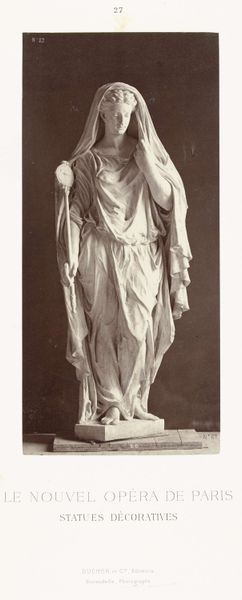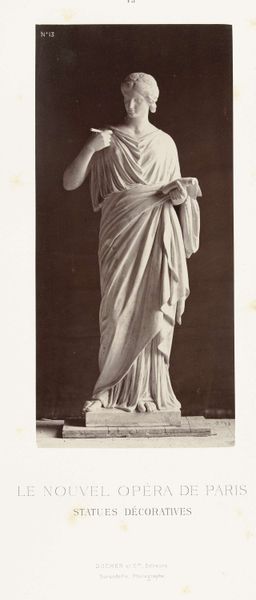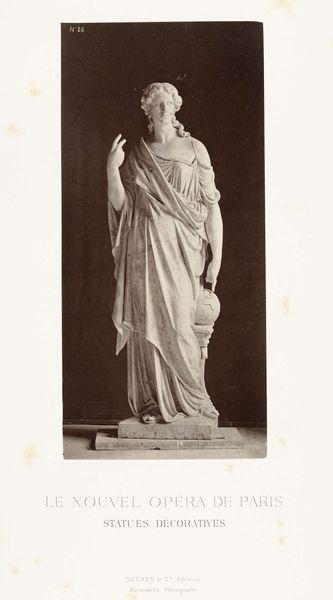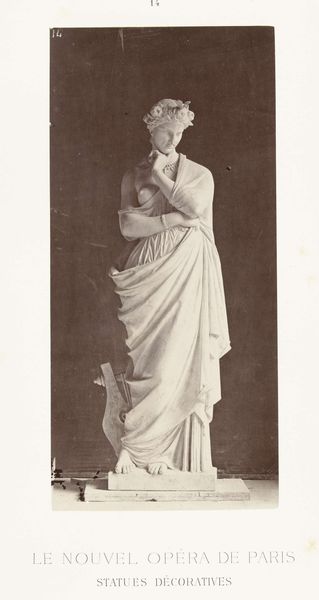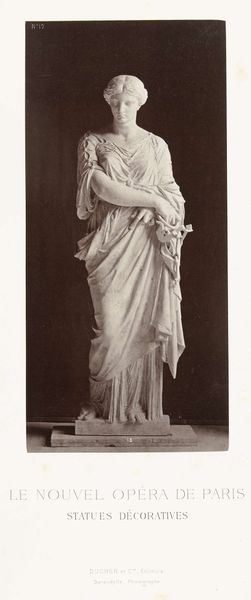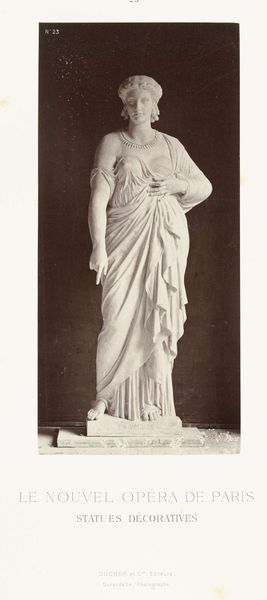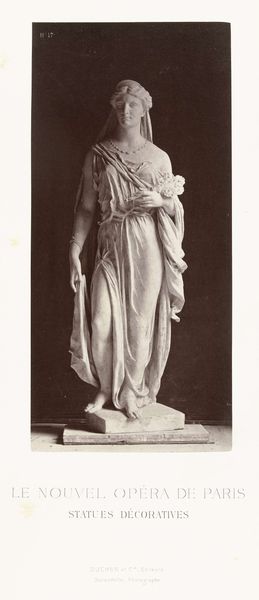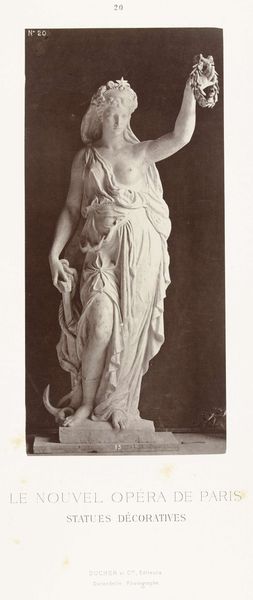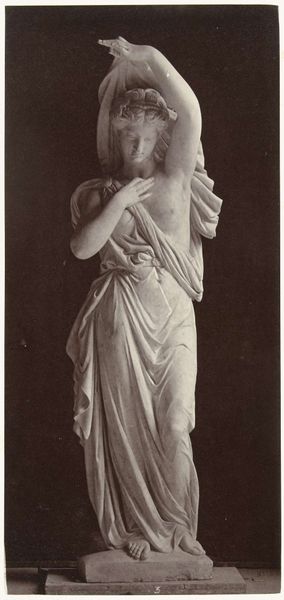
Marmeren beeld van een vrouw in hooggesloten gewaad, ze heeft een vinger opgeheven. c. 1878 - 1881
0:00
0:00
Dimensions: height 275 mm, width 128 mm, height 620 mm, width 438 mm
Copyright: Rijks Museum: Open Domain
Louis-Emile Durandelle made this photograph of a marble statue sometime between 1860 and 1917. It depicts a woman in classical robes, with a finger raised to her lips, perhaps a muse. The statue was created to be one of the decorative statues for the New Opera in Paris, later known as the Palais Garnier. The building itself was a project commissioned by Napoleon III, and it was intended as a monument to the opulence of the Second Empire. We might ask ourselves how the female form was deployed in this project to signal authority. The architecture and the sculpture program worked together to convey a message about French society and its aspirations. To understand this image better, scholars consult not only art historical texts, but also architectural plans, government documents and popular periodicals, which are helpful for understanding the culture of this time. Only through placing art in its social and institutional context can we begin to fully appreciate its meaning and impact.
Comments
No comments
Be the first to comment and join the conversation on the ultimate creative platform.
